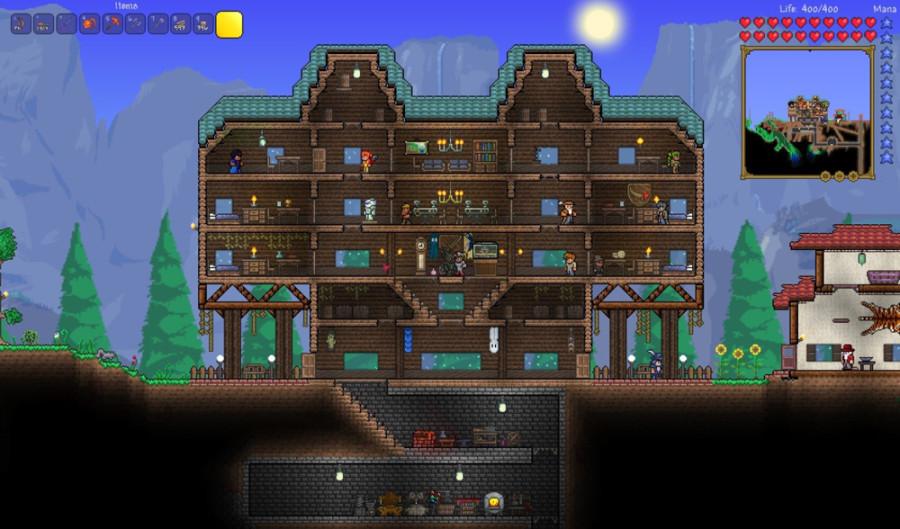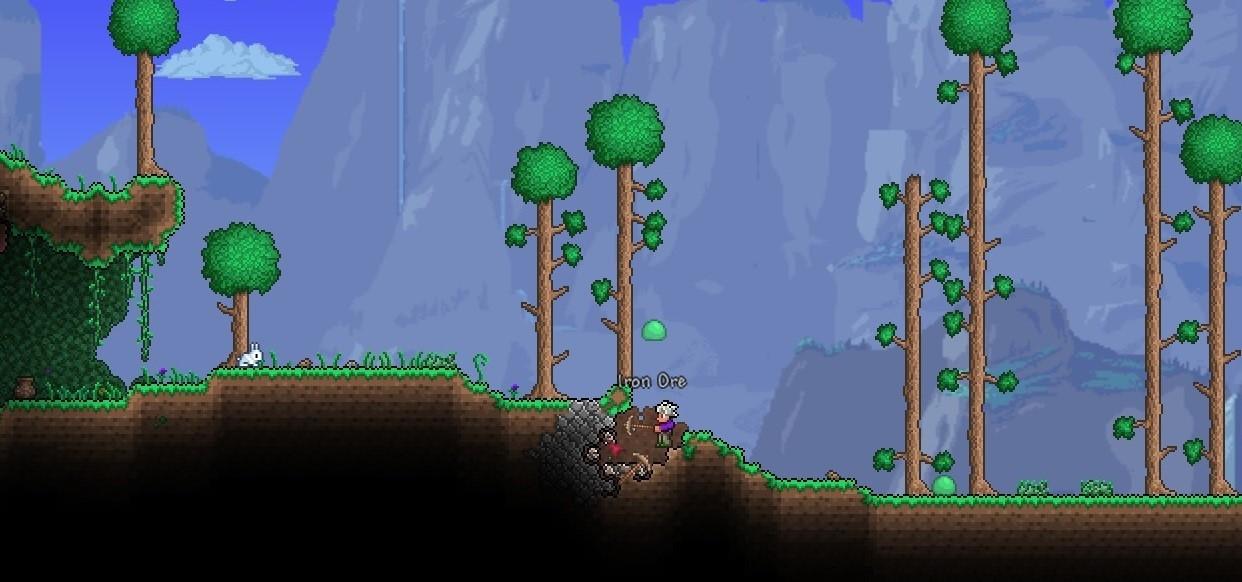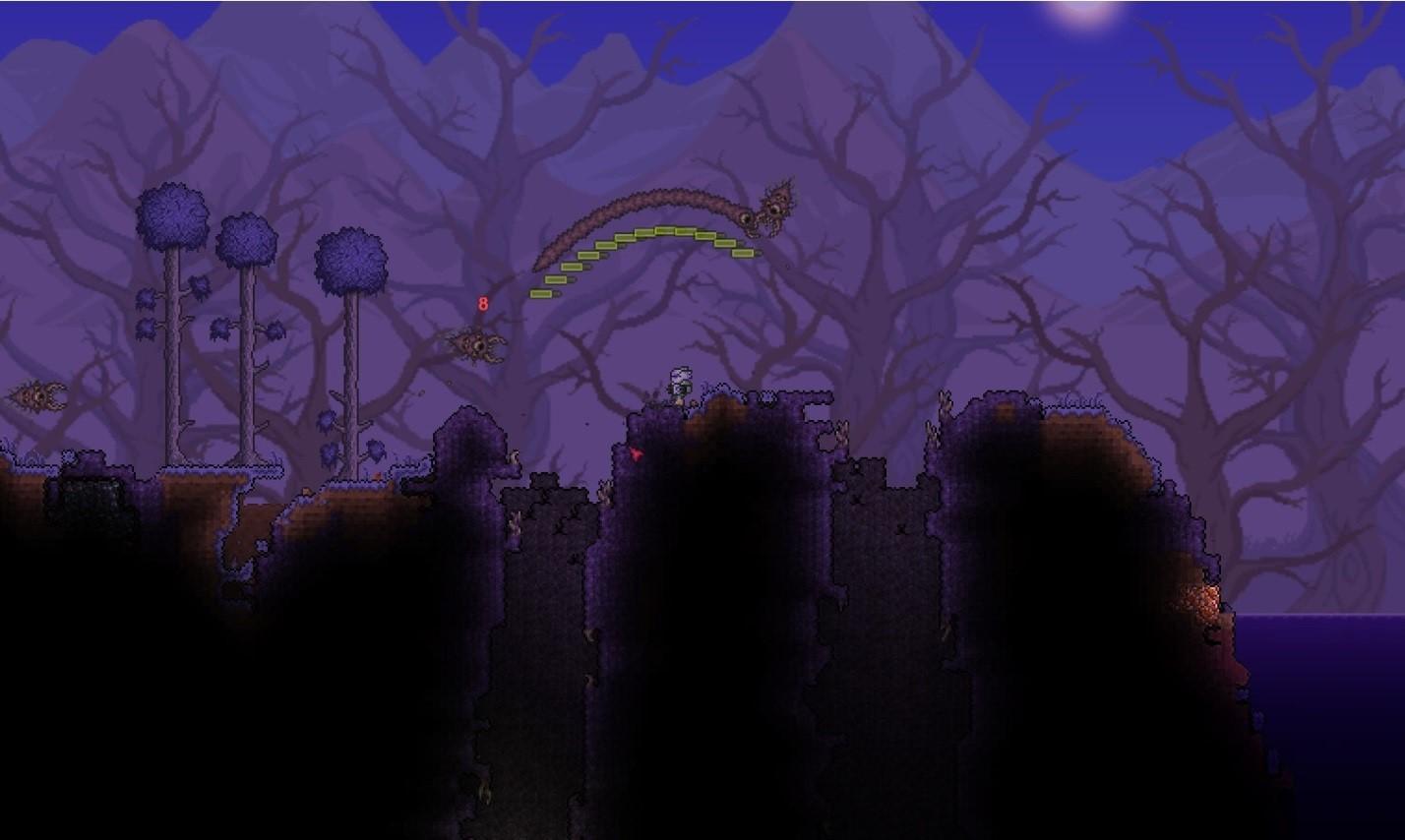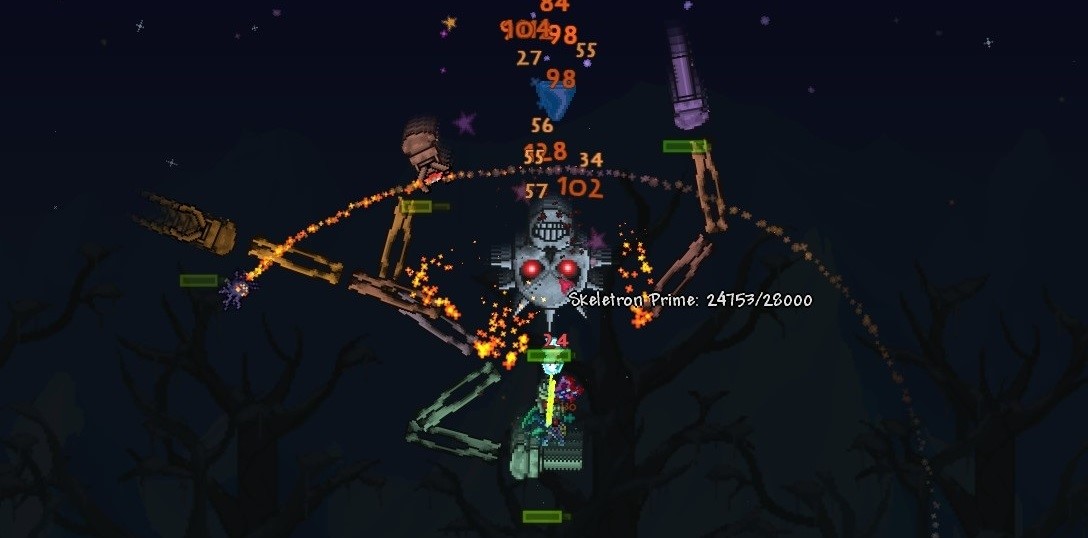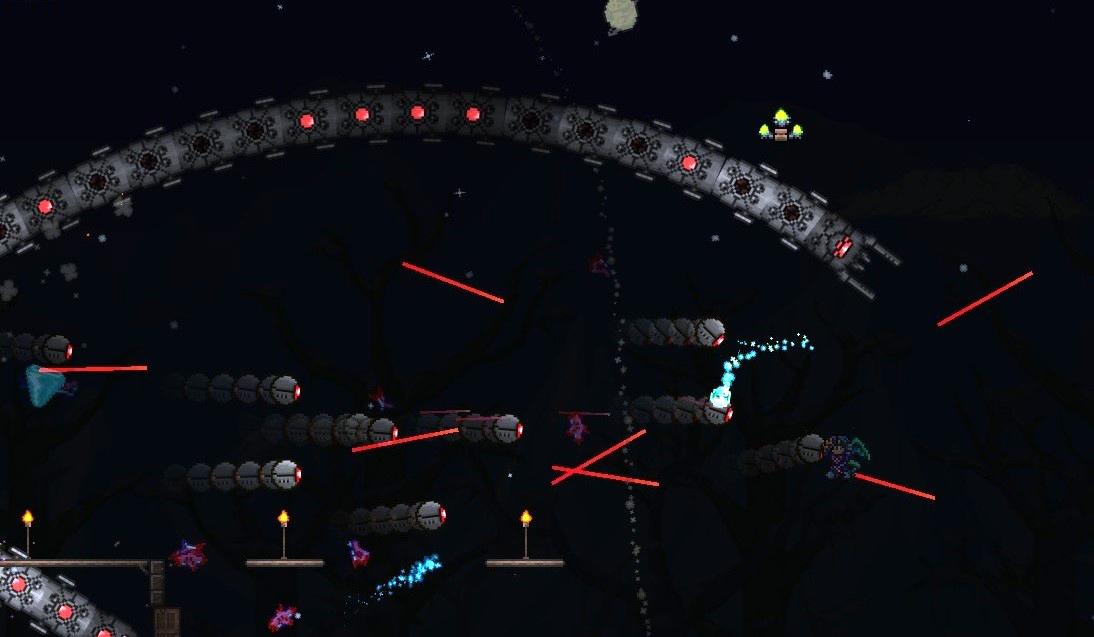Video game review: Terraria
March 17, 2015
Terraria is a 2D-platforming, adventure, sandbox game released on May 16, 2011 and produced by Re-Logic, an independent gaming company. In the wake of the ever-popular game Minecraft comes one of the various inspired games. If you can imagine in the cesspool that is the Sandbox genre, oversaturated with lazy clones and blatant rip offs, that you could fish something that has a focus of its own. To be honest, inspired isn’t even the right word for Terraria unless a game that involves breaking and using blocks to build things is enough for you.
Terraria puts you in a randomly generated, fully destructible, finite, world. With no notion of a clear goal, story, or tutorial, the excitement comes from finding out the world yourself. While a tutorial is something to be desired, it’s not too bad seeing as your best means to survive is to place walls between you and your enemies. You have at least 15 minutes to build a shelter before nightfall in which zombies and flying eye monsters come to attack you. It starts with build, craft, and explore by day, survive by night. If this is sounding any bit typical with sandbox survival games, this is pretty much where that stops.
Given enough time, the survival element is pretty much moot given the better resources you find mining. You mine to create better armor, weapons, and tools essential to endure harsher environments. You’ll find that everything that may have given you trouble before are about as tough as origami swans. Luckily, the map is divided into biomes that vary in degrees of difficulty and the deeper you go underground, the tougher the enemies will get. The progression of the game is on point as you have choice to brave through the tougher areas when you’re ready. The game never presses you to move on but encourages you to with better loot and resources to be found. There is a sense of security staying in the little area you started in but then you might as well have stopped playing. The goal in Terraria is not to survive, but to dominate your world. You will want to have the better gear to face tougher foes and build greater structures.
Despite the game being 2-dimensional, building is a decent past time in the game. The game offers a plethora of ways to design your structures inside and out. It offers various amounts of furniture that can be made from all sorts of material such as different types of wood, bones, glass or even out of cacti. Blocks and walls for background also come in astounding varieties that can even be painted providing a huge color customization for your shelter.
Combat is very simple but is diversified between different combat types: ranged, magic, and melee damage. The varied amount of weapons helps to alleviate the straightforward combat. The depth also lacks in NPC interaction in which they only act as different shops with a few pieces of dialogue. They are just for other resources and equipment like a demolitionist for explosives, an arms dealer for firearms and ammo, or even a party girl who sells silly items. You have to build proper housing and reach certain prerequisites to unlock them.
The crafting system is efficient and intuitive not breaking into the gameplay too often. This is supported by its logical user interface. You are able to craft an item so long as you have the resources required and are near the proper crafting station (furnaces to smelt ore, anvils to make weapons from metals, etc…). The player starts with very basic crafting and will move on to make more complex things. Each possible item obtainable in this game are not wastes of inventory space. Almost all the materials are used in crafting.
The enemy variety is explosively large with 235 different mobs and 16 bosses (give or take a few with console and iOS exclusive monsters). These enemies spawn in the world around you and are spread throughout the different environments. Some enemy resources are key to progressing especially with bosses who provide hectic battles and become a milestone of what you have overcome. They are a decent stretch in difficulty that is never too easy when you first encounter them.
The fantastic soundtrack is composed by Scott Lloyd Shelly. It has an electronic ambience with a very distinct style that is world building. Each biome has their own piece which matches their environment. Boss fights and other events have their own hectic tracks. This makes the world and moments more lively and epic.
Multiplayer is highly recommended. Solo play is plenty fun, but multiplayer compliments this game greatly. Thriving among your world with your friends and sharing the experiences adds to the entertainment value. It’s easy to set up and begin multiplayer sessions online or locally.
The game itself can provide an entertainment value spanning to 30+ hours. It has plenty of replayability especially with other players. The amount of content added to the game since its launch is staggering for its $9.99 price point on Windows or Steam ($4.99 on iOS or Amazon, $14.99 on console) and is yet to receive its last major update targeted for release in June of 2015 for PC. I can heartily recommend this game for its fantastic soundtrack, great replayability and gameplay, and its massive amount of content.



